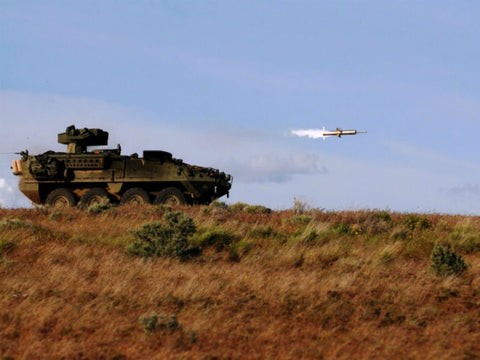Wire-guided missiles, though considered by some as “old school,” still play a significant role in modern warfare. This article will explore the mechanics of these weapons, focusing on their history, components, and operational principles.
A Look Back at the History of Wire-Guided Missiles
The concept of wire-guided weaponry dates back to the late 19th century. While the technology has evolved considerably, the fundamental principle remains the same: guiding a missile using signals transmitted through a wire. The United States developed its versions of wire-guided missiles, most notably the TOW missile, in the 1960s, with subsequent upgrades and refinements. These missiles saw active combat use in the Syrian War and are currently utilized by NATO countries and over 20 nations worldwide. Despite the emergence of laser beam missiles, wire-guided systems remain a relevant option for compact weaponry.
Anatomy of a Wire-Guided Missile
A wire-guided missile consists of several key components that work together to ensure accurate targeting.
- Missile Body: Houses the warhead, propulsion system, guidance system, and the wire spool.
- Guidance System: Receives signals from the launch platform via the wire and adjusts the missile’s trajectory accordingly.
- Wire Spool: Contains a significant length of thin, yet durable, wire. This wire is strategically connected to the missile to ensure that the missile can be guided effectively.
 TOW missile firing sequence showing wire guidance
TOW missile firing sequence showing wire guidance
Operational Mechanics: How Wire Guidance Works
The process of launching and guiding a wire-guided missile involves several steps:
-
Launch: The missile is fired from its launch platform, typically a vehicle or tripod.
-
Wire Deployment: As the missile travels towards its target, the wire unravels from the spool located inside the missile. The wire is strategically attached to the back of the missile and connected to the launch mechanism.
-
Guidance Signals: The operator uses a control system to transmit guidance commands through the wire. These signals instruct the missile to adjust its flight path, correcting for any deviations from the intended trajectory.
-
Target Impact: Guided by the operator through the wire, the missile should impact the intended target.
The BGM-71 TOW missile, for instance, utilizes two thin copper wires joined at the tail for signal transmission. While some militaries employ insulated wires, the US military typically does not. The length of the wire is deliberately longer than the missile’s maximum range to accommodate the spooling mechanism. For instance, a BGM-71 TOW missile with a stated range of 3750 meters requires a wire length exceeding that distance.
Wire Specifications: Balancing Strength and Flexibility
The wire used in these missiles needs to strike a balance between strength and flexibility. While it doesn’t need to be as robust as industrial-grade wires, it must be strong enough to withstand the stresses of deployment. More importantly, the wire must be flexible and lightweight to fit within the compact confines of the missile. Despite its thin profile, the wire is difficult to cut without specialized tools, preventing accidental severing during operation.
Key Advantages and Disadvantages
Wire-guided missiles offer certain advantages, including:
- Accuracy: Direct control over the missile’s trajectory allows for precise targeting.
- Resistance to Electronic Countermeasures: Unlike radio-guided missiles, wire-guided systems are not susceptible to jamming or electronic interference.
However, there are also limitations to consider:
- Limited Range: The length of the wire restricts the missile’s effective range.
- Operator Vulnerability: The operator must remain stationary during the missile’s flight, making them vulnerable to counter-attack.
Conclusion
Wire-guided missiles continue to be a relevant weapon system. Their accuracy and resistance to electronic countermeasures make them a valuable asset on the battlefield. While advancements in missile technology continue, wire-guided systems are likely to remain in service for the foreseeable future.
